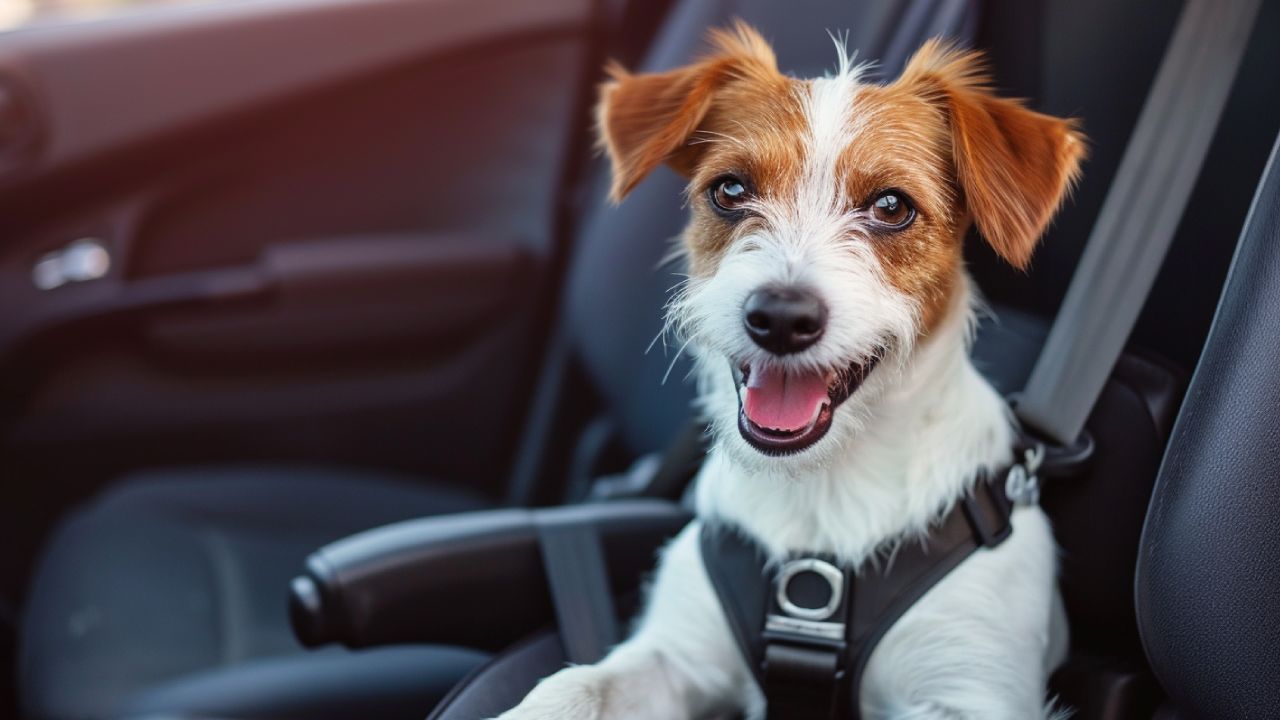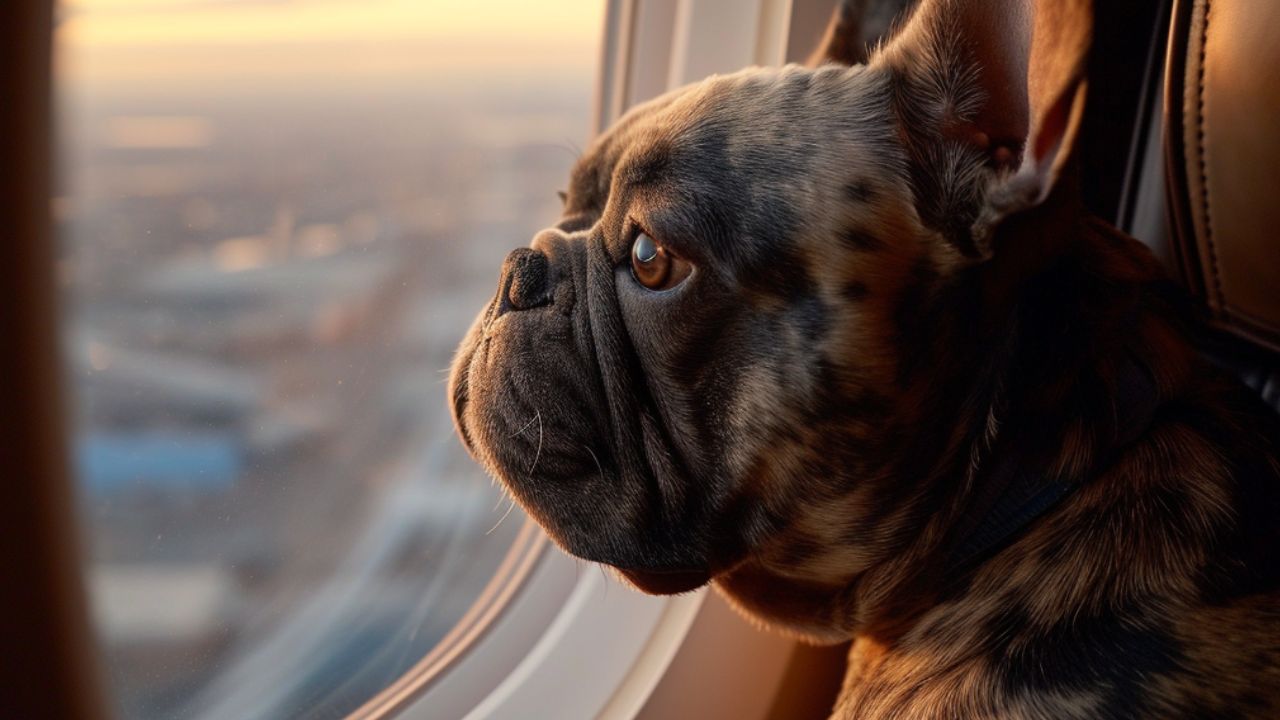Embarking on a journey with your beloved pet adds excitement and a sense of adventure to your travel plans. Whether planning a road trip, flying to a distant destination, or exploring new cities by train, ensuring a smooth and stress-free experience for you and your pet starts with thorough preparation. Here are essential steps to prepare for traveling with your pet.
Pre-Travel Veterinary Checkup
Before setting out on your journey, visiting the veterinarian is crucial. This checkup will confirm that your pet is healthy and fit for travel. It’s the perfect time to update any vaccinations required for your destination, obtain necessary health certifications for airline travel, and discuss any concerns you might have about your pet’s ability to travel. Always carry a copy of your pet’s health records and vaccination proof to avoid hiccups during your travels.
Proper Identification
If you and your pet get separated during your travels, having proper identification can be a lifesaver. Ensure your pet wears a collar with tags that include your contact information. Additionally, consider microchipping your pet for permanent identification. This simple procedure can significantly increase the chances of being reunited with your pet. Alongside ID tags and microchips, carrying a recent photo of your pet can also assist in recovery efforts if they get lost.
Choosing the Right Travel Crate
A secure and comfortable travel crate is essential for your pet’s safety during transit, especially for car and airline travel. The crate should be spacious enough for your pet to stand, turn around, and lie comfortably. Look for crates with adequate ventilation to ensure your pet can access fresh air. Additionally, ensure the crate is equipped with a leak-proof bottom and is made of sturdy materials to withstand the rigors of travel. Equipping the crate with a familiar blanket or toy can help soothe your pet, making the travel experience more comforting.
Key Takeaways for a Happy and Safe Journey
- Veterinary Checkup: Ensure your pet is ready and healthy for the trip.
- Identification: Collar tags, microchipping, and a recent photo are vital for your pet’s safety.
- Travel Crate: Select a comfortable, well-ventilated, durable crate for secure travel.
Covering these fundamental aspects of travel preparation sets the stage for a memorable and enjoyable trip with your pet.

Tips for Traveling with Pets by Car
Car travel is one of the most common and flexible ways to embark on adventures with your pet. It offers the convenience of taking breaks, controlling the environment, and making the journey as comfortable as possible for you and your furry companion. Here are essential tips to ensure a smooth and safe car travel experience with your pet.
Acclimating Your Pet to the Car
Start by introducing your pet to the car in a non-threatening way. Allow them to sit in the car with you without starting it, and gradually progress to short drives around the neighborhood. This helps reduce anxiety and acclimate your pet to the car’s movements and sounds.
Safety First
Your pet’s safety should be a top priority during car travel. Secure them in a well-ventilated crate or carrier, or use a pet safety harness that attaches to the vehicle’s seatbelt system. This protects your pet in case of sudden stops and prevents them from distracting the driver.
Comfort and Care
Ensure your pet has access to fresh water and avoid feeding them a large meal before the trip to prevent carsickness. Bring along their favorite toy or blanket to offer comfort and a sense of familiarity. Plan for regular stops to let your pet stretch their legs and relieve themselves, and always clean up after them.
Never Leave Your Pet Unattended
Never leave your pet alone in a parked car, especially on warm or hot days. The temperature inside a car can soar to dangerous levels in just a few minutes, putting your pet at risk of heatstroke.
Window Safety
While many pets enjoy feeling the breeze through an open window, ensuring their safety is essential. Keep windows only partially open to prevent your pet from sticking its head out, which can lead to eye injuries or worse if debris strikes it. This also prevents the risk of them jumping out of the vehicle.
Key Takeaways for a Joyful Car Ride
- Gradual Introduction: Familiarize your pet with the car to ease anxiety.
- Secure Restraint: Use a crate or safety harness for protection.
- Regular Breaks: Plan stops for exercise and potty breaks.
- Comfort Measures: Bring water, toys, and a blanket to make the car feel like home.
- Safety Precautions: Keep pets inside the vehicle and never leave them unattended.
Following these tips ensures your pet’s journey is as enjoyable as the destination.

Tips for Traveling by with Pets Plane
Flying with your pet requires careful planning and consideration, especially since it can be more stressful than other forms of travel for both pets and their owners. Here are crucial tips to ensure a safe and comfortable flying experience for your furry friend.
Choosing the Right Flight
When booking a flight, opt for direct flights whenever possible to reduce your pet’s stress from long layovers and airline personnel handling. Check the airline’s pet policy beforehand, as rules and fees vary significantly.
Visit Your Veterinarian
A pre-flight checkup is essential to ensure your pet is healthy and fit for air travel. Discuss any concerns with your vet, such as anxiety or motion sickness, and obtain a health certificate if required by the airline, typically within ten days of your departure.
Airline-Approved Travel Crate
Invest in a sturdy, airline-approved travel crate large enough for your pet to stand, turn around, and lie comfortably. The crate should have proper ventilation and a leak-proof bottom, and it should be securely labeled with your contact information and a photo of your pet. Acclimate your pet to the crate well before your trip to reduce travel anxiety.
Familiarize With Airline Procedures
Different airlines have specific procedures and requirements for traveling with pets. Some allow pets in the cabin if the crate fits under the seat, while others may require pets to travel as cargo. Familiarizing yourself with these procedures will help you prepare for the day of travel and choose the best option for your pet.
Prepare for Takeoff
On the day of the flight, arrive at the airport early to allow ample time for check-in and security procedures. Ensure your pet has had a chance to exercise and go to the bathroom before being placed in their crate. Place a piece of clothing with your scent in the crate to comfort your pet during the flight.
During the Flight
Stay calm and positive, as pets can sense their owner’s emotions. If your pet is traveling in the cabin with you, keep the crate secured under the seat and resist the temptation to open it during the flight to soothe your pet, which can lead to escape or injury.
Key Takeaways for a Smooth Flight
- Direct Flights: Choose direct flights to minimize stress and handling.
- Veterinary Checkup: Ensure your pet is healthy and obtain a health certificate.
- Crate Preparation: Use an airline-approved crate and acclimate your pet to it.
- Understand Airline Policies: Familiarize yourself with the specific airline’s pet policies.
- Pre-flight Preparation: Exercise your pet and arrive early at the airport.
By adhering to these tips, you and your pet can enjoy a safe and comfortable journey through the skies.

Traveling by Train With Your Pet
Train travel can be a scenic and relaxing way to explore new destinations with your pet. Many train services offer pet-friendly travel options, allowing your four-legged companion to join the adventure. Here are essential tips to ensure a smooth and enjoyable train journey with your pet.
Research Train Policies
Before planning your trip, research the pet policies of the train service you intend to use. Policies can vary widely, with restrictions on the size, breed, and number of pets allowed per passenger. Some trains may require pets to be kept in a carrier at all times, while others may have more lenient rules.
Choose the Right Carrier
If your pet is required to stay in a carrier, ensure it is comfortable, well-ventilated, and secure. The carrier should be large enough for your pet to stand, turn around, and lie comfortably. Acclimate your pet to the carrier well before your trip to reduce stress during travel.
Prepare for the Journey
Pack a travel bag for your pet, including water, food, treats, a leash, waste bags, and any necessary medications. If the journey is long, inquire about pet relief areas at stops along the route. Also, bring familiar items from home, such as a blanket or toy, to provide comfort.
Keep Your Pet Calm
Train stations and trains can be bustling and noisy, which might overwhelm your pet. Keep them calm by staying close, speaking to them soothingly, and offering treats and reassurance throughout the journey. If your pet is anxious, discuss potential solutions with your veterinarian before the trip.
Be Considerate of Fellow Passengers
While many people love pets, some may have allergies or fears. Keep your pet within your designated area and ensure they do not disturb other passengers. Always follow the train staff’s instructions regarding pet behavior and containment.
Practice Good Pet Etiquette
Ensure your pet is well-behaved and does not harm fellow travelers. This includes managing noise, keeping your pet within their carrier if required, and addressing any messes immediately.
Key Takeaways for Train Travel With Pets
- Research and Understand Train Policies: Familiarize yourself with the specific rules and regulations of the train service.
- Select an Appropriate Carrier: Ensure your pet’s carrier is secure and comfortable for the duration of the journey.
- Pack Essentials: Prepare a travel bag with all necessities for your pet’s comfort and well-being.
- Maintain Calmness: Keep your pet calm and reassured in the bustling environment of train travel.
- Respect Fellow Passengers: Practice good pet etiquette to ensure a pleasant journey.
Train travel with pets can be a rewarding experience. It offers a unique way to bond with your pet while exploring new locales.

Tips for Staying at Hotels or Vacation Rentals With Your Pet
Finding a pet-friendly hotel or vacation rental is crucial when traveling with your furry friend. The best accommodations allow pets and welcome them with open arms, offering amenities to make their stay as comfortable and enjoyable as yours. Here are tips to ensure your hotel stay is a hit with your pet.
Research Pet-Friendly Accommodations
Start by researching accommodations that explicitly state they are pet-friendly. Websites and booking platforms often have filters to narrow your search to pet-welcoming places. Read the pet policy carefully to understand any fees, restrictions on size or breed, and the amenities offered for pets.
Understand the Pet Policy
Each hotel or rental may have its unique set of rules for pet guests, including designated areas for walking your pet, rules about leaving pets unattended in the room, and any additional fees. Knowing these policies can help you prepare and avoid surprises during your stay.
Bring Familiar Items
Just like humans, pets feel most comfortable in a familiar environment. Bringing their bed, favorite toys, and bowls can make the accommodation feel more like home, significantly reducing any anxiety your pet may feel in a new place.
Plan for Pet Care
If your travel itinerary includes activities where pets are not allowed, look for local pet care options in advance. Some hotels offer pet-sitting services or can recommend local pet sitters or daycares.
Leave the Room as You Found It
Being a considerate guest will help ensure hotels and rentals continue to welcome pets. Cover any furniture your pet may use to prevent damage and clean up before you check out. This includes picking up after your pet in outdoor areas.
Exercise and Explore
Ensure your pet gets plenty of exercise during your stay. Look for local parks or trails where you can take your pet for walks or runs. Exploring the area together can be a fun way to bond and ensure your pet is tired and happy at the end of the day.
Critical Takeaways for a Pleasant Stay
- Research and Book Early: Find accommodations with clear pet-friendly policies.
- Understand the Rules: Know the details of the pet policy to avoid any issues.
- Bring Comforts from Home: Familiar items can ease your pet’s stress in new surroundings.
- Arrange for Pet Care: Plan for any activities that might require leaving your pet behind.
- Be a Considerate Guest: Leave the accommodation clean and undamaged.
By following these tips, you can ensure that your stay at a hotel or vacation rental is enjoyable for you and your pet, making your travel experience even more memorable.

Preparing for International Travel With Your Pet
International travel with pets involves additional layers of preparation and planning due to the varying regulations and requirements from one country to another. Ensuring a smooth journey for your pet across international borders requires attention to detail and understanding the specific guidelines of your destination country. Here are essential tips for preparing for international travel with your pet.
Understand Destination Requirements
Each country has its own set of rules and regulations for importing pets, including specific vaccinations, quarantine periods, and documentation. To understand these requirements, start by visiting the official website of the embassy or consulate of your destination country. For pets entering the United States, familiarize yourself with the CDC’s guidelines and state-specific requirements.
Obtain a Pet Passport or Health Certificate
For travel within the European Union, your pet will need a pet passport, which includes records of all vaccinations and proof of a microchip. An International Certificate of Veterinary Inspection (health certificate) may be required for other destinations, indicating that your pet is fit for travel and free of infectious diseases.
Schedule a Veterinary Visit
Book an appointment with your veterinarian to get all necessary vaccinations, discuss preventive treatments for parasites, and obtain the required health certificate. Ensure your pet is microchipped, a common requirement for international travel.
Consider Quarantine Regulations
Some countries require pets to undergo quarantine upon arrival to prevent the spread of diseases. Research these regulations thoroughly to prepare yourself and your pet for any mandatory quarantine period, both logistically and emotionally.
Arrange for Pet Transport
Investigate airlines’ pet policies to find the best option for your pet’s travel, whether in the cabin or as cargo. Ensure the airline is experienced in handling pets and that you understand their requirements for pet carriers, such as cat strollers, feeding, and layover care.
Pack a Pet Travel Kit
Prepare a travel kit for your pet, including food, water, medications, a leash, waste bags, and familiar items like toys or bedding to comfort them during the journey. Also, carry a copy of your pet’s health records and the contact information of veterinaries in your destination area.
Key Takeaways for International Pet Travel
- Research Regulations: Know the entry requirements of your destination country.
- Health Certificates and Passports: Ensure your pet has the necessary documentation.
- Veterinary Preparation: Complete all health checks and vaccinations.
- Quarantine Awareness: Be prepared for possible quarantine procedures.
- Travel Arrangements: Choose a pet-friendly airline and prepare a travel kit.
By meticulously preparing for international travel with your pet, you can ensure that the journey is as stress-free as possible for both of you, paving the way for an enjoyable adventure abroad.
How Can I Travel With Multiple Pets Safely and Efficiently?
Traveling with multiple pets requires extra preparation and organization. First, ensure each pet has a carrier or seatbelt harness to keep them secure during transit. Consider the space requirements in your vehicle or the airline’s pet policy to accommodate all pets comfortably. It’s also important to schedule frequent breaks if traveling by car to let each pet stretch and relieve themselves.
Label each pet’s carrier with their name, your contact information, and any important medical information. Lastly, maintain a routine as much as possible to keep your pets calm and comfortable throughout the journey.
Remember, the essence of pet travel is not just about the logistics but also about creating lasting memories with your beloved animal. Embrace each moment, from the serene car rides to the bustling airports and quaint train journeys, knowing you’ve taken every precaution to ensure your pet’s safety and comfort.

FAQs
Is pet health insurance useful for travel?
Pet health insurance benefits travel, covering unexpected vet expenses due to accidents or illnesses on the road. Ensure your policy includes coverage for emergencies and treatments in your travel destination. Some policies may also offer travel-related benefits, such as trip cancellation due to pet illness. Check the insurance’s territorial coverage and understand the claim process before your trip.
Can I bring my pet’s favorite snacks on a plane?
Yes, you can bring your pet’s favorite snacks on a plane, but it’s crucial to check with the airline regarding their policy on pet food in both carry-on and checked luggage. It’s also advisable to keep snacks to a minimum during the flight to avoid any digestive discomfort for your pet.
How do I manage time zone changes with my pet?
A few days before your trip, gradually adjust your pet’s feeding and walking schedule to align with your destination’s time zone. This can help minimize their jet lag and make the transition smoother for both of you.
What should I do if my pet gets anxious during travel?
Consider natural calming aids or consult your veterinarian about appropriate anti-anxiety medication for travel. Familiar objects like blankets or toys can also help soothe your pet. Practice short travel sessions beforehand to acclimate your pet to the experience.
Are there pet-friendly activities at most travel destinations?
Many destinations offer pet-friendly activities, from parks and beaches to hiking trails and outdoor cafes. Research your destination to plan outings you and your pet can enjoy together.
How can I find a local vet in my travel destination?
Before traveling, research veterinary clinics in your destination area and keep a list of their contact information handy. Additionally, the hotel or rental host may be able to recommend local veterinary services.
What if my pet has special dietary needs?
If your pet has special dietary needs, pack enough of their regular food for the trip. Investigate if their specific food brand is available at your destination, or consider shipping it to your accommodation beforehand.
References to sources:






0 Comments